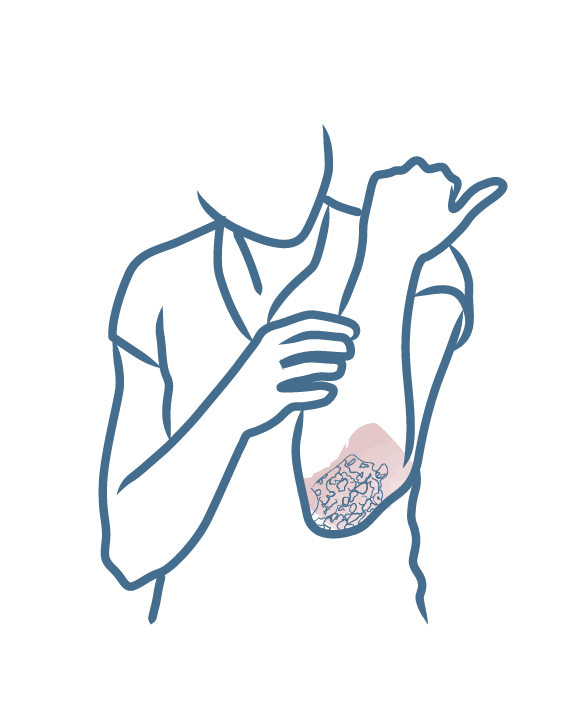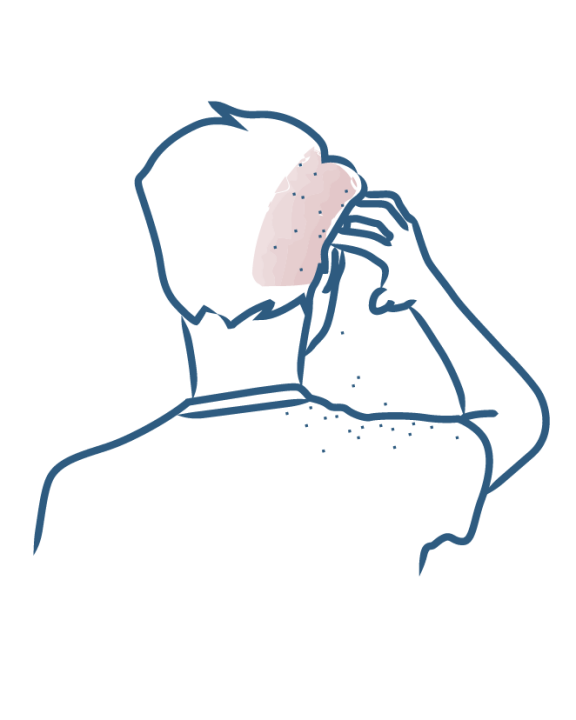What is psoriasis?
Inverse psoriasis or Skin-fold psoriasis
The most common and well-known form of this disease is plaque psoriasis, which mainly affects areas subject to friction like the elbows, knees, back, etc. But did you know that there is another form of psoriasis that is quite the opposite?
A form of psoriasis to distinguish from others
This type of psoriasis does not affect the areas subject to friction, on the contrary, it occurs in the skin folds. The term inverse psoriasis is used to distinguish it from other forms of psoriasis, although different types of psoriasis can occur concomitantly in the same patient. Inverse psoriasis plaques can appear in any of the body's skin folds: the underarms, on the navel, in the more intimate skin folds (the buttock folds, the groin folds, or the folds under the breasts), which can cause discomfort and embarrassment to the person concerned.
In babies, inverse psoriasis is referred to as "diaper psoriasis" because the plaques appear on the skin directly under the diaper.
The symptoms of inverse psoriasis
Inverse psoriasis lesions do not resemble "conventional" psoriasis plaques. They are often very red and inflammatory, and there are no scales on their surface. This is because of the increased levels of moisture in the skin folds compared to on the rest of the body. The itching is intense. Inverse psoriasis plaques sometimes resemble a fungal infection of the skin folds, however, an experienced dermatologist should be able to distinguish between the two very quickly.
How is inverse prosirasis treated?
If in doubt, it is better to consult a healthcare professional than to lather on antifungal creams and lotions that may irritate the skin and aggravate your psoriasis. Treatment varies according to the extent and severity of lesions. If taking a local treatment, avoid using ointments or creams that are too rich because there is an additional risk of irritation and maceration in the skin folds.
More information
- Discover Psoriasis in children
What is psoriasis?
Psoriasis in children
- Discover Joint psoriasis or Psoriatic arthritis
What is psoriasis?
Joint psoriasis or Psoriatic arthritis
- Discover Pustular psoriasis
What is psoriasis?
Pustular psoriasis
- Discover Erythrodermic psoriasis
What is psoriasis?
Erythrodermic psoriasis
- Discover Nummular psoriasis
What is psoriasis?
Nummular psoriasis
- Discover Guttate psoriasis
What is psoriasis?
Guttate psoriasis
- Discover Plaque psoriasis
What is psoriasis?
Plaque psoriasis
- Discover Is psoriasis contagious?
What is psoriasis?
Is psoriasis contagious?
Our care routines
Psoriasis-prone skin
Dermatological expertise
To better understand your skin and hair, discover our exclusive content and innovative care products designed to improve your quality of life..


